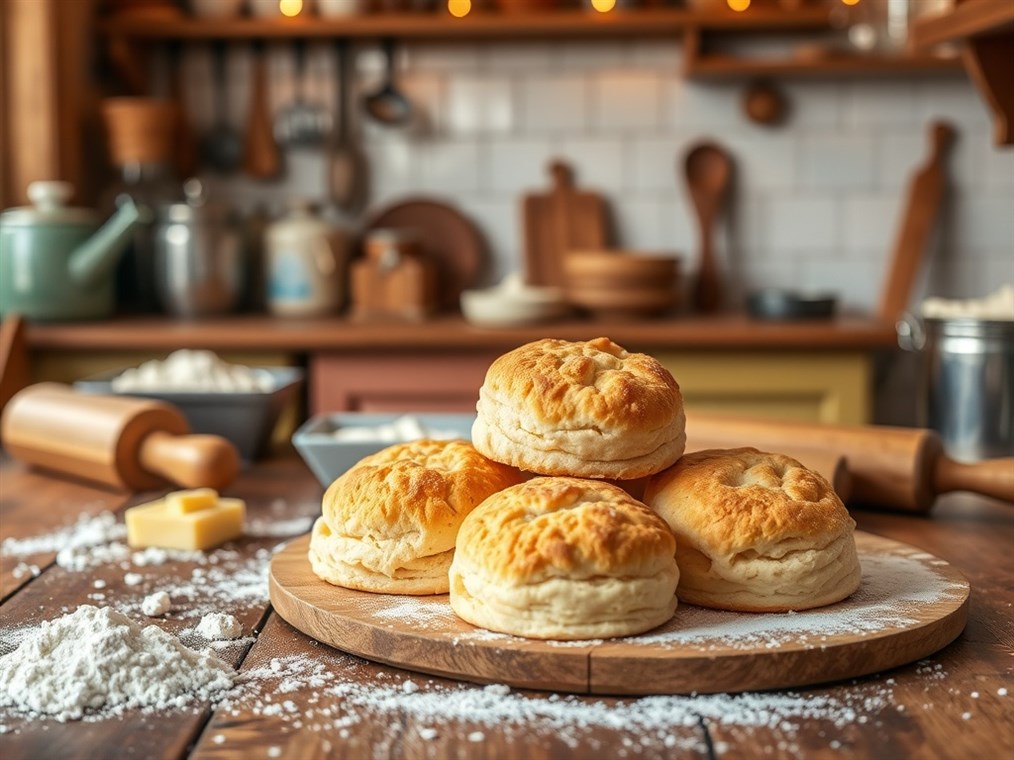The Quest for Biscuit Perfection: More Than Just Flour and Butter
Okay, let’s talk biscuits. Not just any biscuits, but good biscuits. We’re talking the kind that make you close your eyes and sigh, the kind that bring back memories of grandma’s kitchen or that amazing little bakery you stumbled upon during your travels. Because let’s face it, a truly great biscuit is more than just a baked good; it’s an experience.
Now, what makes a biscuit truly sing? It’s not just about following a recipe – it’s about understanding the soul of the thing. And a big part of that soul? Texture.
Think about it: that perfect American biscuit, all flaky layers and a tender crumb that practically melts in your mouth. You want that slight crispness on the outside giving way to cloud-like softness within. That flakiness? That’s the magic of lamination, where you’re basically creating dozens of super-thin layers of dough that separate in the oven, creating those glorious pockets of air. It’s like a pastry chef’s secret handshake.
But then you hop across the pond, and “biscuit” takes on a whole different meaning. Suddenly, we’re talking digestives with a satisfying snap, or shortbread that crumbles at the slightest touch. I remember my first trip to Scotland and being completely bewildered by the sheer variety of biscuits on offer – each with its own unique texture and purpose. Some were sturdy enough to dunk in tea, others so delicate they practically dissolved on your tongue.
Getting that texture right is a tightrope walk. Overwork the dough, and you’ll end up with something tough enough to build a house with. The trick? A gentle touch. Think of it like you’re cradling a baby bird.
Of course, texture is only half the battle. You can have the flakiest biscuit in the world, but if it tastes like cardboard, what’s the point? Flavor is where things get really interesting.
Biscuits often rely on just a handful of humble ingredients: flour, fat, liquid. But trust me, the quality of those ingredients matters. It’s like the difference between a cheap bottle of wine and a fine vintage.
Flour? Pay attention to the protein content. If you’re after a biscuit with some give, go for a “stronger” flour. But for something more delicate, a “softer” flour is your best bet. And the fat? Butter, shortening, lard – they all bring something different to the party. Cold fat is key for those flaky layers, and butter? Well, butter just makes everything better, doesn’t it? It adds a richness you just can’t replicate.
Then there’s the liquid. Milk, buttermilk, even water will do the trick. Buttermilk, though? That’s the secret weapon. It adds a subtle tang and makes for an extra-tender crumb. My grandmother swore by it, and honestly, I think she was onto something.
And don’t be afraid to play around with additions! A pinch of salt, a little sugar, some cheese, herbs, spices… the possibilities are endless. It’s all about finding your own signature biscuit.
Let’s not forget the visual appeal. A golden-brown biscuit just screams “eat me!” That color comes from the Maillard reaction, which is basically a fancy way of saying that sugars and amino acids are getting together and creating deliciousness. And the shape? Whether you go for perfectly round or something a little more rustic, consistency is key.
But beyond the aesthetics, there’s a science to all this. Baking powder and baking soda are your leavening agents, creating the gas that makes the biscuit rise. Gluten development? That’s the enemy of a tender biscuit. And a hot oven? Absolutely essential for that crisp exterior and fluffy interior.
The term “biscuit” is a broad one. In the States, you’re probably thinking of those soft, fluffy quick breads slathered in gravy. In the UK, it’s more likely a hard, sweet cookie dunked in tea. And way back when, biscuits were simple, twice-baked breads designed to last for ages – basically the survival food of sailors and soldiers.
So, there you have it: a deep dive into the wonderful world of biscuits. It’s a journey that touches on science, history, and personal preference. Whether you’re a seasoned baker or just starting out, I hope this has given you a little food for thought (pun intended!). Now, go forth and bake some biscuits! Your taste buds will thank you.

